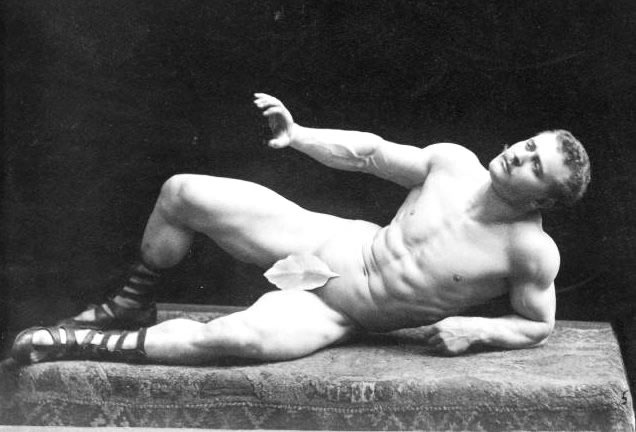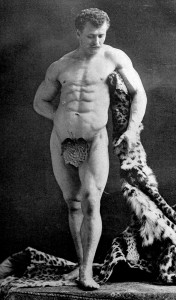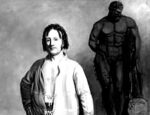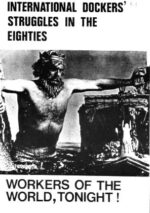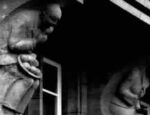Description
Meet Eugen Sandow, said to have been born Friedrich Wilhelm Müller in Eastern Prussia, but seems to have been adopted into a Polish family. His childhood was poor and wholly obscure. He survived as a young man by working with a travelling ‘freak show’ and circus performers until his career took off in late Victorian London. A strongman and showman, and sometimes bare-knuckle pugilist, he became the most famous of all the ‘physical culturists’ in the late 19th and early 20th centuries across UK, US and parts of Europe.
The american-born photographer Henry Van der Weyde photographed Sandow in his London studio at the height of the athlete’s fame. Van der Weyde wanted to place before the public, in his own words, “a living Greek statue.” The celebrated artist Aubrey Hunt also painted Sandow as a gladiator in an arena at Rome. In the painting Sandow is dressed in a tiger-skin and Roman sandals. He became very fashionable not only in London but he also toured England and Scotland, especially the chief industrial cities, where it is said a hearty reception awaited him.
He is regarded as the father of body-building. Here in the guise of the ‘Farnese Hercules’, he often adopted poses famous from ancient statues, including ‘The dying Gaul’ (see below). His rivals included Charles Sampson, Frank (‘Cyclops’) Bienkowski, and Henry (‘Hercules’) McCann. He became enormously wealthy after touring the USA and starred in sell-out public shows in London for many years. The house he bought with the proceeds, at 161 Holland Park Avenue, London, W11, has now been marked by an English Heritage blue plaque.
Want to learn more about Eugen Sandow? Watch our video: Searching For Sandow.
